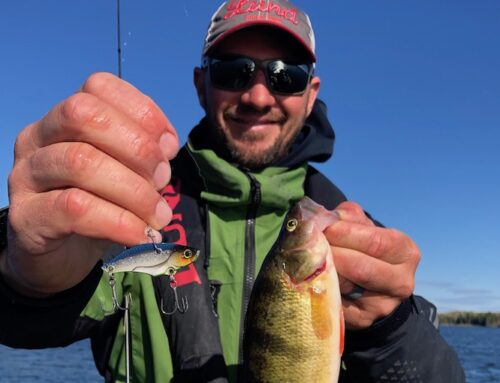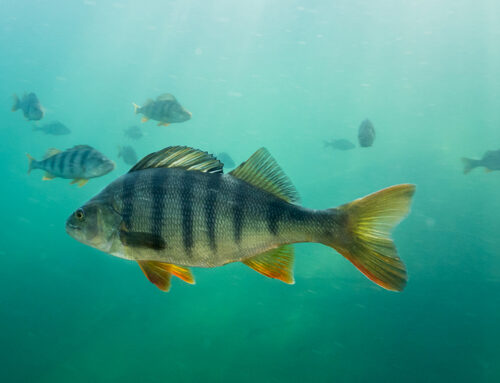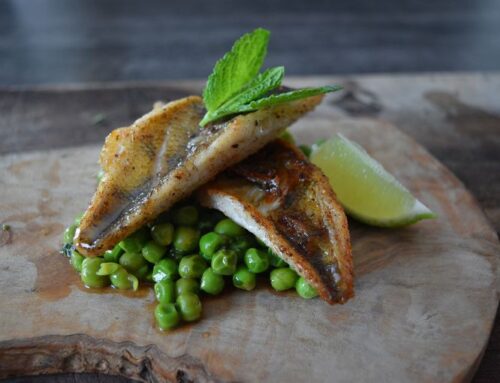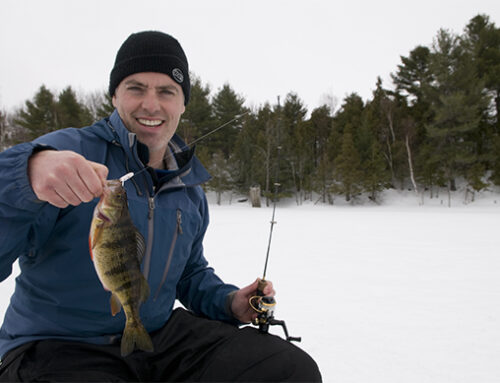 Slip-bobbering for spring crappies has become an annual rite of spring for me and my fishing buddies.
Slip-bobbering for spring crappies has become an annual rite of spring for me and my fishing buddies.
It’s a fun and effective way to catch them, but when the wind howls – as it seems to do on many a warm, sunny, spring day – fishing can be difficult. Strong winds make it hard to cast accurately, keep your boat under control, and keep your bait in the strike zone.
However, the wind can also be your friend. Wind and sun stir up – and warm up – cold water in shallow, weedy bays first, stimulating insect life and attracting baitfish. In spring, the best pre-spawn crappie bite is often mid to late daytime, often also the warmest and windiest time of day.
Tactics
There are a number of tactics any angler can employ to ensure the wind doesn’t ruin the trip. If you’re fishing from a canoe or a small tinny, look for a thin line of pencil reeds close to shore. Crappie often cruise the outer edge of these, so try to find a spot where the wind will push you into the shore and hold you, while still letting you cast out and drift your presentation back into the reeds.
In larger patches of aquatic vegetation or around brush or rock piles, you’ll need to anchor. Tying the anchor near mid-boat can keep you from moving about wildly, although two anchors – one fore and one aft – is better. A bow-mount electric motor with an ‘anchor’ feature works wonders, and I highly recommend it.

To maximize casting accuracy, minimize line bend and get a good hook set, I recommend a specialized, long, moderate-action crappie rod, at least a 10-footer. Long crappie rods make it much easier to do short, accurate casts, and will let you plop your presentation right in front of fish that you can often see.
Long cast
The longer the cast, the easier for the wind to pick up your bait and blow it away. The shorter the distance from rod tip to bobber, the easier it is to keep line taught and set the hook when the bobber does the slow submerge. I’ve found spring, shallow water crappies usually spook from an approaching boat somewhere between 15 and 20 feet – close enough to ‘cane fish’ with a long crappie rod.
If using long rods, it’s best to have two dip nets, keeping one at each end of the boat. It’s really hard to net a fish yourself with a really long rod, and given the light line, small lures, and the crappies’ paper mouth, trying to lift a big slab into the boat isn’t advisable.
Tie a small rubber-core sinker, or a couple of split shots a foot or so above your bait.
To ensure your bobber sits right and doesn’t look like it’s surfing across fish-holding water, which is what happens with light 1/16th or even 1/8th ounce baits in high winds, you’ll need extra weight. I’ve tried ¼ ounce jigs and spoons, but early-season crappies seem to prefer a more floating presentation. Instead, tie a small rubber-core sinker, or a couple of split shots a foot or so above your bait.
Baits
Early season, pre-spawn, windy day crappies seem to like soft-bodied, artificial baits like tubes, fuzzy grubs, twister tails, and other minnow or grub presentations. Plugs, spoons and spinners can produce, but in thick veg, where the fish are often found, they’re virtually impossible to use. Similarly, minnows and other organic adornments are constantly being torn off by vegetation. Plus, in my experience, they don’t increase performance, but are actually a distraction. Be prepared to experiment with colour, though. With crappies, colour can make all the difference in the world.






Leave A Comment